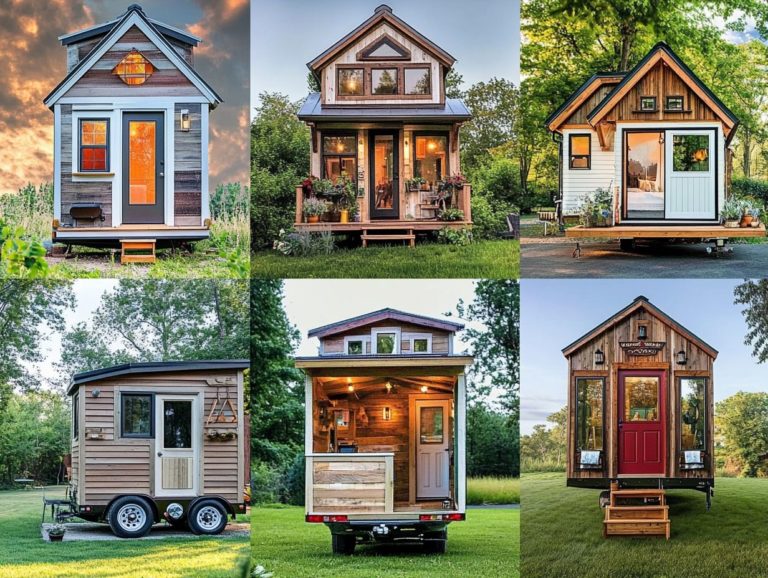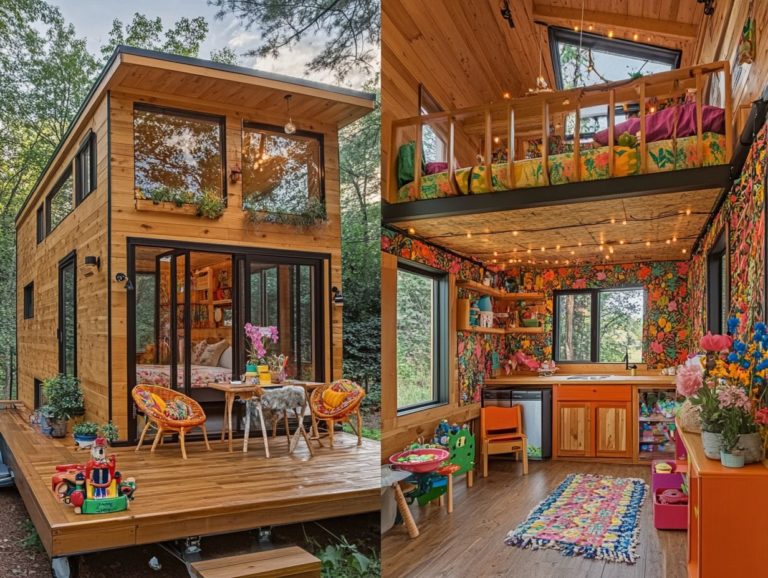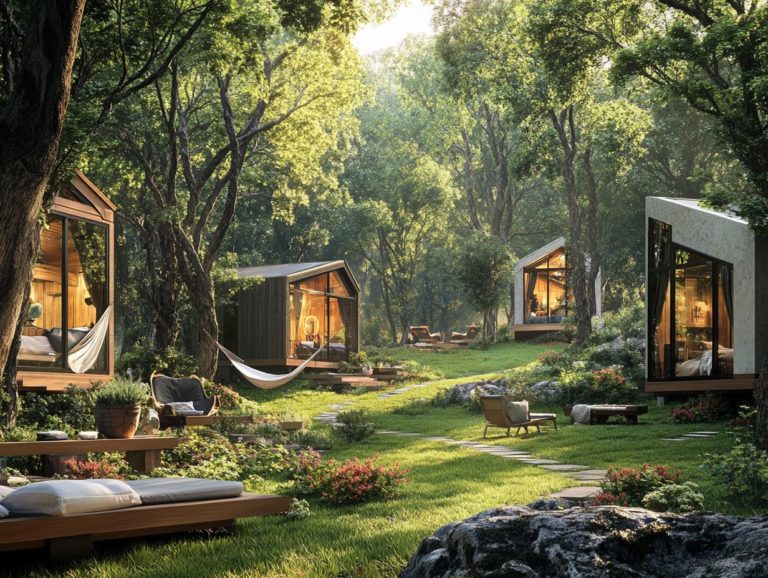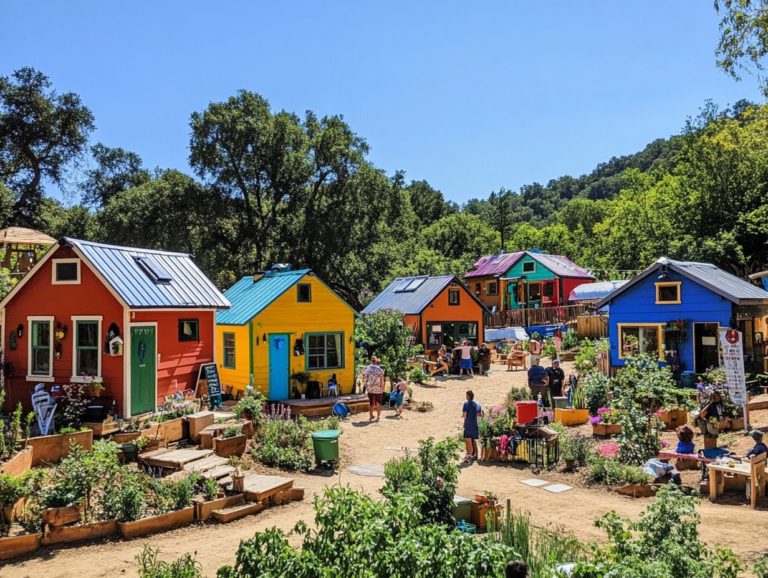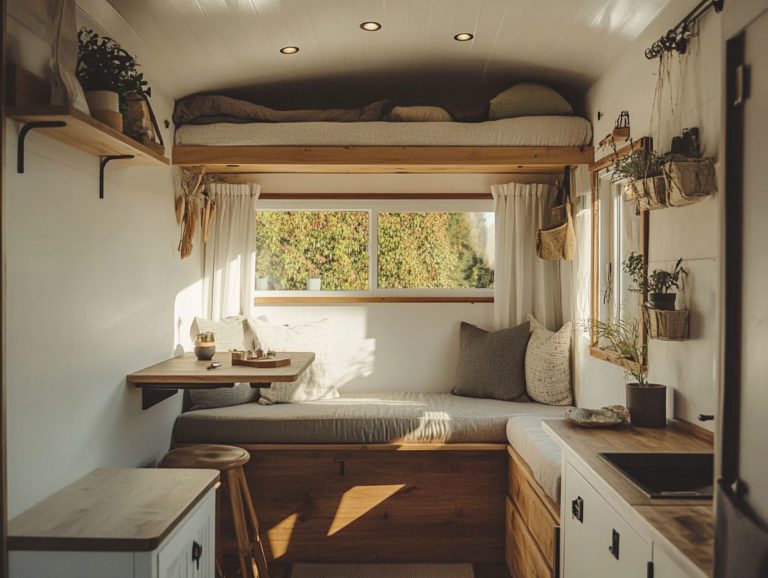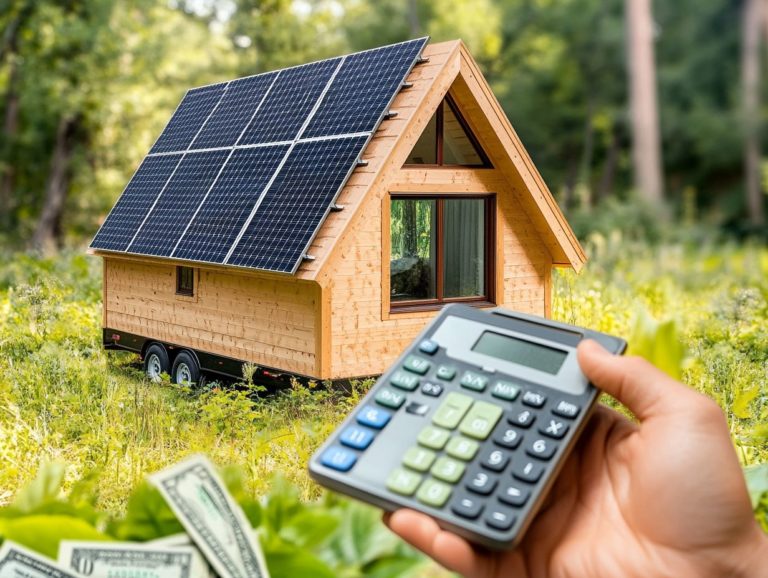Overcoming Stigmas of Tiny House Living
Tiny house living is often misunderstood, leading many to miss its unique benefits. Downsizing may seem intimidating, but the financial savings and environmental perks are compelling reasons to consider this lifestyle.
Limited space and utility challenges do exist, but this article explores these misconceptions. It showcases success stories and offers insights on embracing the joys of tiny living.
Get ready to redefine what home truly means!
- Key Takeaways:
- Understanding the Stigmas of Tiny House Living
- The Benefits of Living in a Tiny House
- Challenges of Tiny House Living
- Overcoming Stigmas and Embracing Tiny House Living
- Real Life Examples of Successful Tiny House Living
- Frequently Asked Questions
- What is a tiny house?
- What are some common stigmas surrounding tiny house living?
- How can I overcome the stigma of living in a tiny house?
- Is tiny house living only for single individuals or couples?
- Do I have to sacrifice comfort and amenities in a tiny house?
- Are there any benefits to living in a tiny house?
- Tiny house living offers financial and environmental advantages, challenging the stigma of being a “poor” lifestyle.
- Educating others and sharing success stories are keys to changing mindsets about tiny house living.
- Addressing space limitations while enjoying the benefits of a simpler life can help overcome tiny house challenges.
Contents [hide]
Key Takeaways:
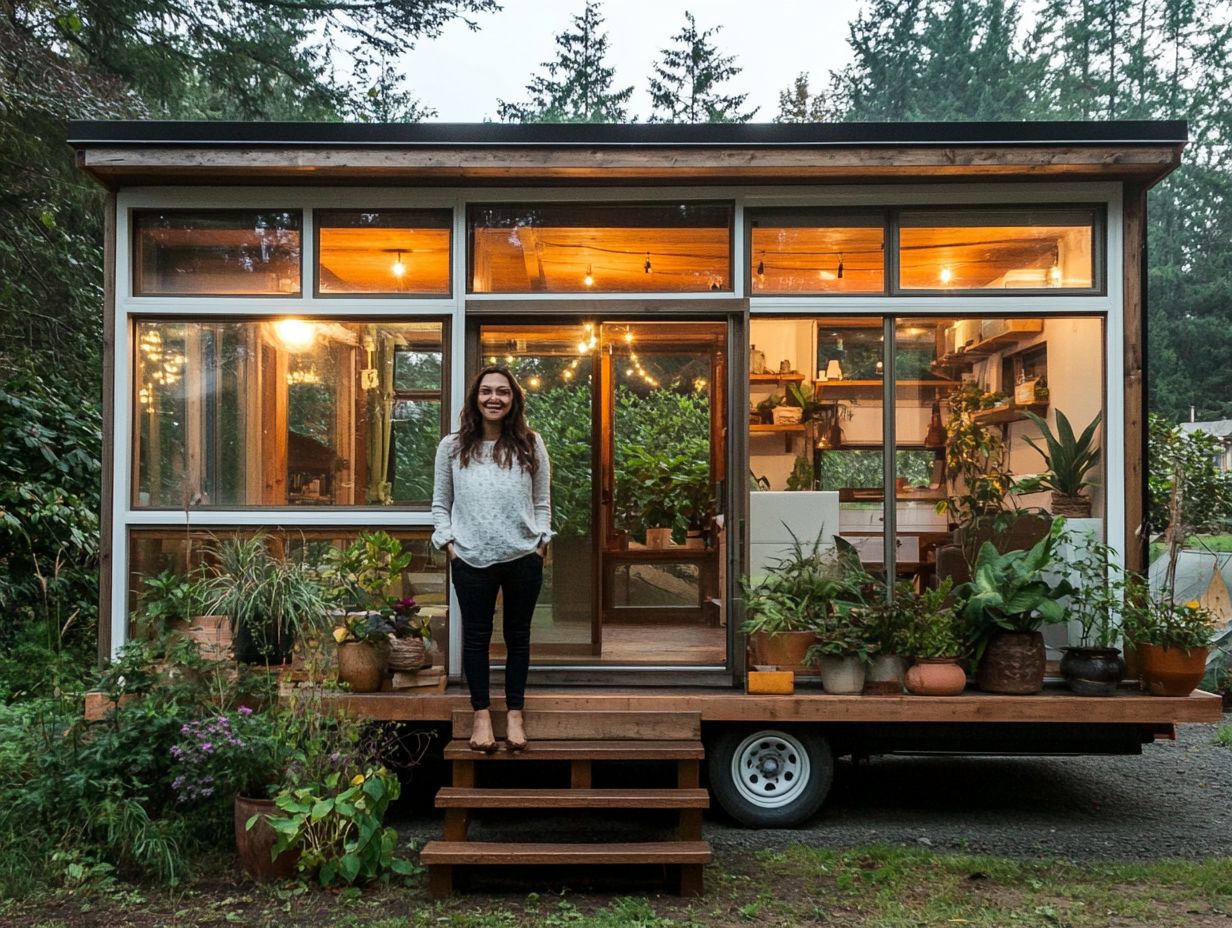
Understanding the Stigmas of Tiny House Living
Understanding the stigmas around tiny house living involves examining historical contexts and social dynamics. Negative perceptions often stem from ongoing biases related to social inequality.
Inclusivity is a major challenge; the movement hasn’t fully embraced diverse communities, especially BIPOC individuals seeking sustainable living amid housing discrimination.
Common Misconceptions and Stereotypes
Many misconceptions about tiny houses come from a lack of understanding about sustainable living benefits and the diverse communities involved. People often assume tiny houses are only for minimalists or wealthy individuals.
In reality, tiny homes attract residents from various socioeconomic backgrounds, including single parents and retirees. They find comfort in the simplicity and affordability that tiny houses offer.
Conversations about tiny living often ignore environmental justice, where marginalized communities face barriers to sustainable housing. Recognizing the diverse stories of tiny house inhabitants reveals that the movement is about more than minimalism.
The Benefits of Living in a Tiny House
The benefits of living in a tiny house extend beyond financial savings. They embody sustainable living and environmental stewardship, aligning with today’s climate discussions.
Tiny homes provide a transformative approach to affordable living while reducing environmental footprints. By adopting a minimalist lifestyle, you can lower utility costs and lessen your ecological impact.
Financial and Environmental Advantages
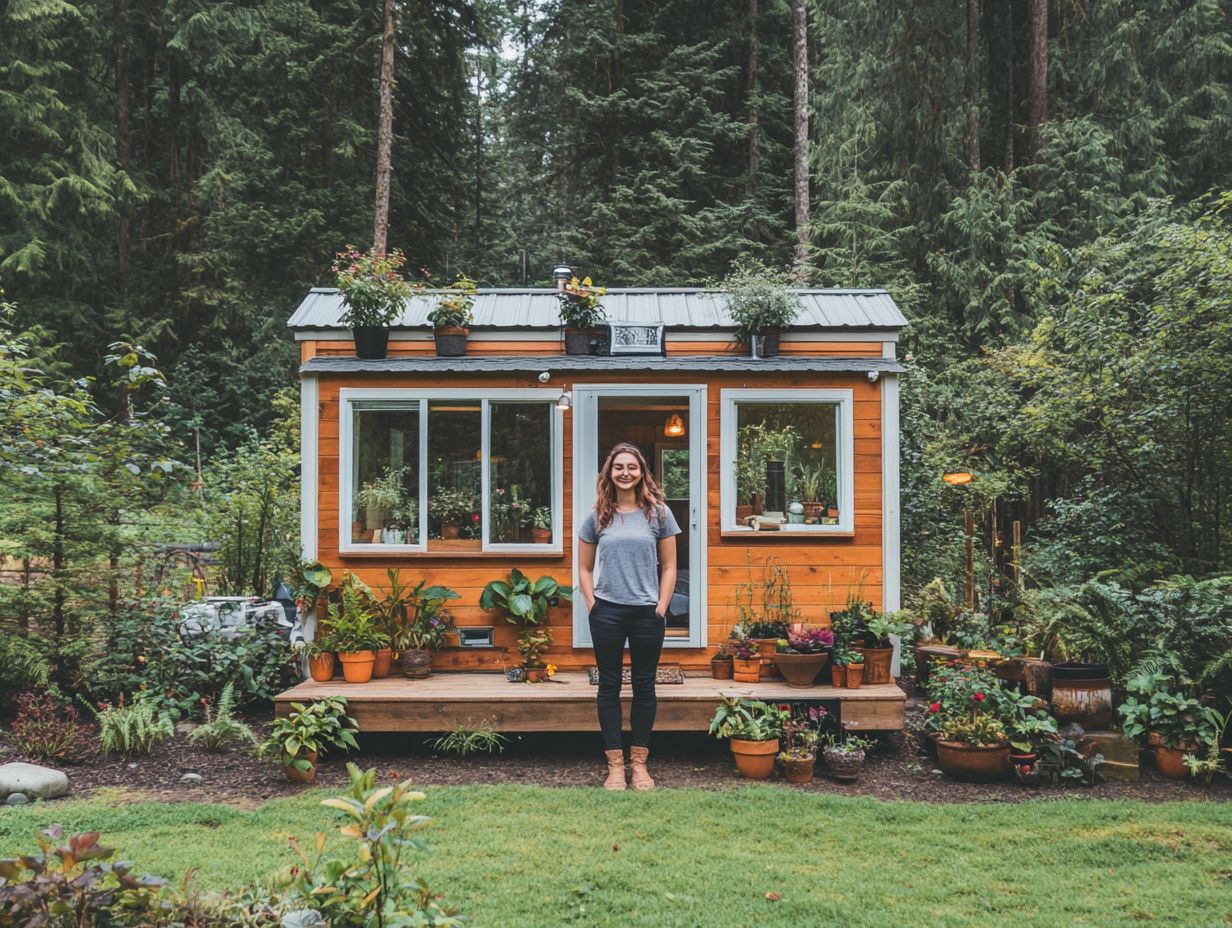
Tiny house living presents remarkable financial and environmental benefits, making it an enticing choice for anyone seeking affordable housing solutions.
By choosing a smaller footprint, you can significantly lower your mortgage costs. This grants you greater flexibility in your budget. Lower utility bills are also a bonus, thanks to the energy-efficient designs typically found in tiny homes, which often feature modern appliances and exceptional insulation. Additionally, embracing the culture of tiny house communities can enhance your living experience.
On the environmental side, these compact dwellings require fewer resources for construction and generate less waste, helping you live more sustainably. As society leans towards minimalism and eco-friendliness, tiny homes are a game-changer in how we think about housing.
Challenges of Tiny House Living
While tiny house living offers numerous benefits, it also presents unique challenges, such as space limitations and utility concerns.
The tiny house movement, despite its growing popularity, grapples with inclusivity issues that may prevent diverse communities from fully embracing these sustainable living options. Factors like zoning laws that dictate how land can be used, insufficient infrastructure, and accessibility concerns can significantly influence how well these homes serve their residents. For those looking to make the most of limited space, exploring tiny house living strategies can be particularly beneficial, especially for individuals from marginalized backgrounds.
Addressing Space and Utility Limitations
Addressing space and utility limitations in tiny houses is vital for maximizing functionality and livability.
Consider innovative solutions like multifunctional furniture that doubles as storage, which can greatly enhance your design efficiency. A sofa that transforms into a bed or a coffee table with hidden compartments can significantly change how you utilize every precious square foot.
Incorporating smart storage options, such as vertical shelving or under-stair compartments, can elevate the overall organization of your space.
As these creative solutions emerge, they also highlight pressing issues related to housing discrimination and access. It s essential to ensure that these advancements genuinely benefit everyone, especially those facing challenges in securing stable housing.
Overcoming Stigmas and Embracing Tiny House Living
To change how people view tiny houses, we need to educate and reach out to communities. Sharing inspiring stories from people like Ashley Okegbenro Monkhouse and Jewel Pearson highlights the importance of representation in this lifestyle. This journey toward inclusivity actively challenges prevailing stereotypes, paving the way for broader acceptance of tiny homes as real solutions to today s housing crises.
How to Change Mindsets and Educate Others
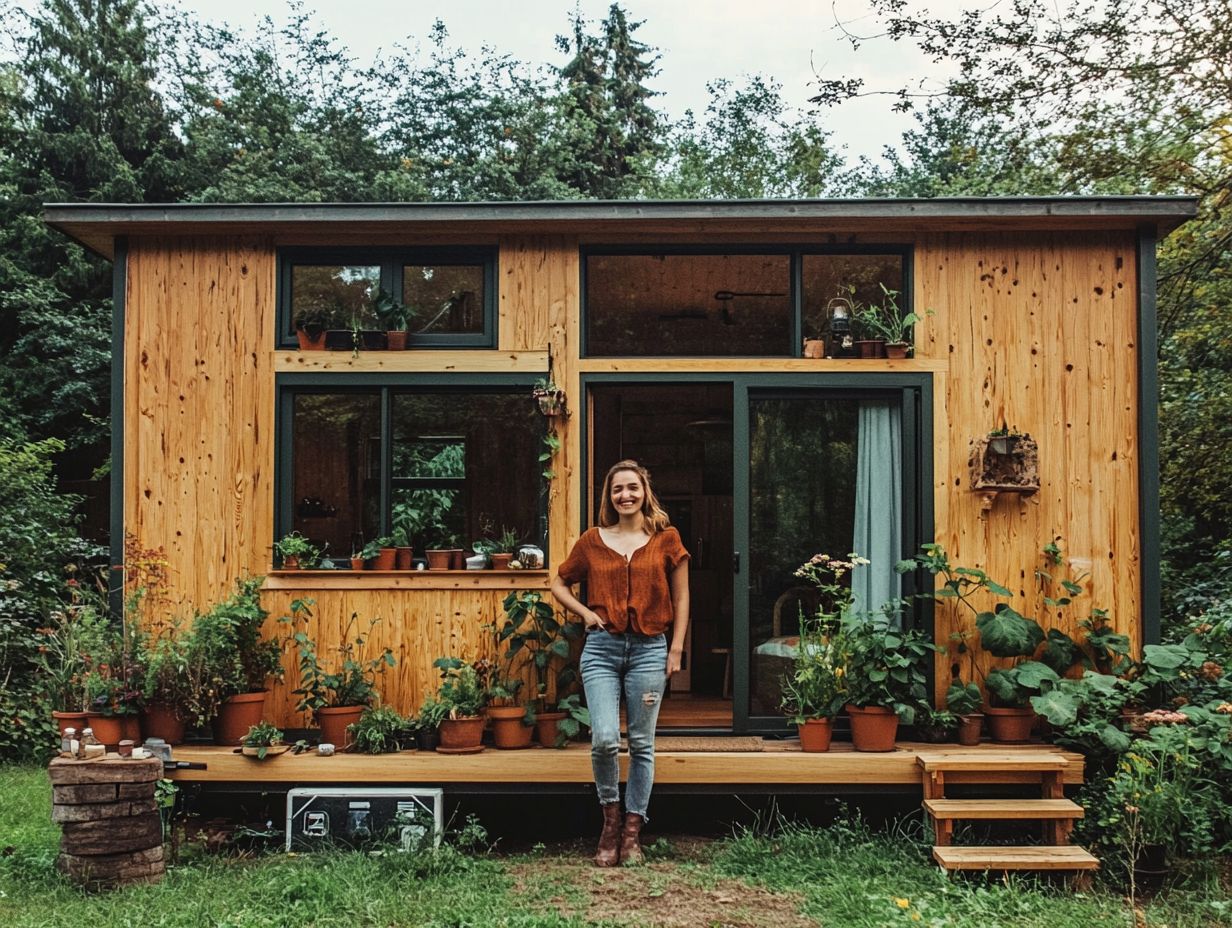
Changing your mindset about tiny house living requires a thoughtful approach that emphasizes education and community outreach. Focus on the significance of representation and inclusivity.
Engaging in dialogue through workshops, neighborhood events, and online platforms fosters a deeper understanding of what tiny homes truly represent. Sharing personal stories from those who have embraced this lifestyle sheds light on the financial benefits, environmental impacts, and personal freedoms that come with smaller living spaces, as well as the principles of tiny home living: embracing minimalism.
Participating in successful initiatives like community design charrettes and local tiny home fairs allows you to engage directly with the concept. These programs not only educate the public but also showcase diverse perspectives, breaking down stereotypes and encouraging broader acceptance of reimagining spaces in tiny house living in the housing conversation.
Real Life Examples of Successful Tiny House Living
Successful tiny house living showcases diverse experiences. This lifestyle resonates particularly with Black tiny homeowners and other marginalized groups.
Quixote Village and Opportunity Village Eugene are great examples of micro-villages. They provide affordable housing and foster a strong sense of community.
These narratives highlight not just the benefits of tiny homes but also the transformative effects they can have on social dynamics and inclusivity.
Inspiring Stories and Testimonials
Inspiring stories and testimonials from tiny house owners reveal the transformative potential of this lifestyle. It illustrates how it can lead to greater financial freedom and a more sustainable living environment.
Many individuals and families have shared their journeys, detailing the challenges they encountered. From overwhelming debt to the pursuit of a simpler existence, they emphasize how this shift enabled them to prioritize experiences over possessions.
Their stories reflect a broader movement toward community engagement. Tiny home advocates unite to promote inclusivity, share resources, and support one another in their unique lifestyles.
This sense of belonging cultivates a deeper connection among neighbors, turning housing solutions into vibrant communities that thrive together, as highlighted in the role of community in tiny house living!
Frequently Asked Questions
What is a tiny house?
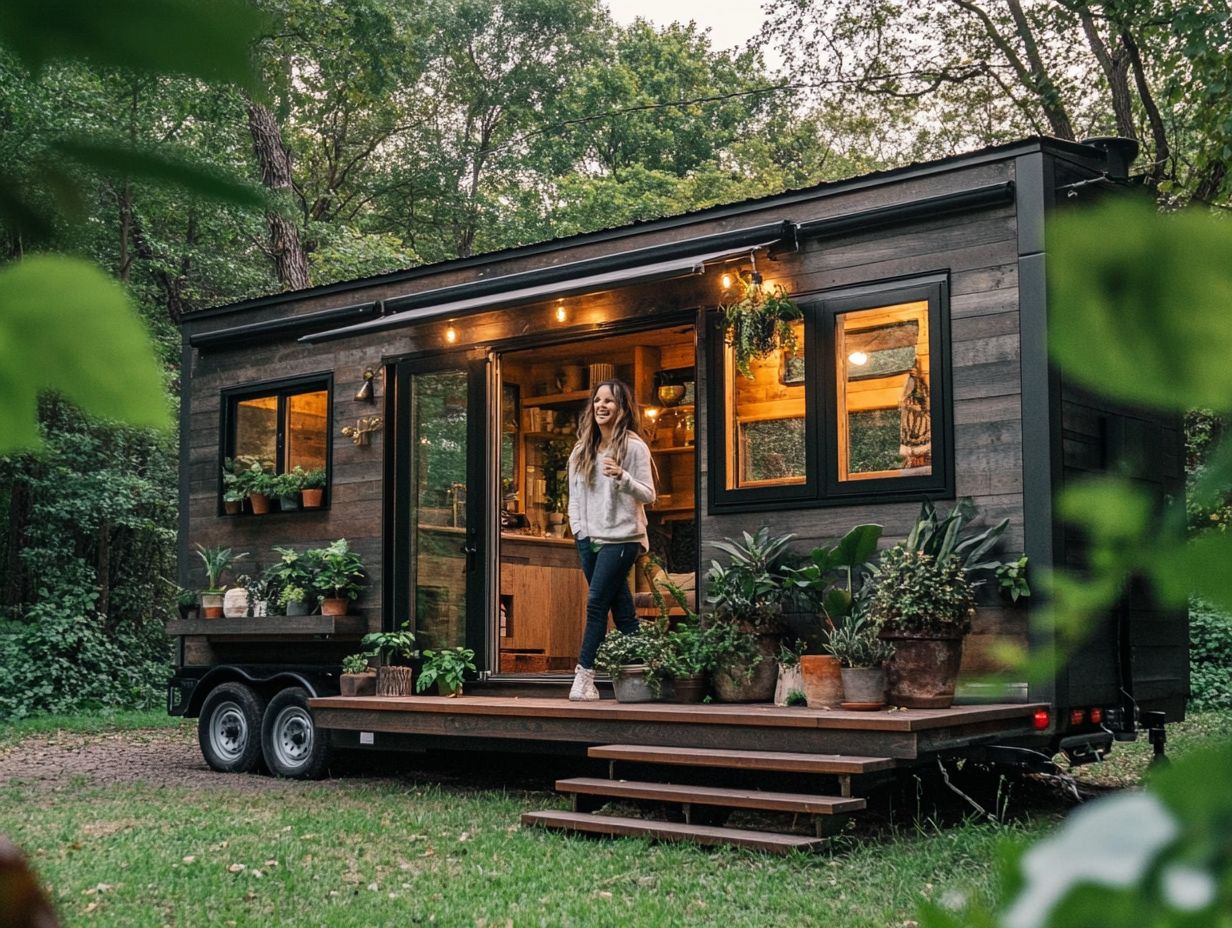
A tiny house is a small, compact living space that typically measures less than 400 square feet. They are often designed to be energy efficient and functional, focusing on minimalism.
What are some common stigmas surrounding tiny house living?
Some common stigmas surrounding tiny house living include the assumption that it’s only for people who can’t afford a traditional home. Many think it’s cramped, uncomfortable, or suitable only for temporary living situations.
How can I overcome the stigma of living in a tiny house?
One way to overcome the stigma of living in a tiny house is to educate others about the benefits and joys of this lifestyle. Share your positive experiences and show how you have made your tiny house a comfortable and functional home!
Is tiny house living only for single individuals or couples?
Tiny houses are a fantastic choice for anyone! They can accommodate families with creative designs like bunk beds, storage solutions, and multi-functional furniture.
Do I have to sacrifice comfort and amenities in a tiny house?
Not necessarily! While tiny houses may have limited space, they can still include all the necessary amenities for comfortable living, such as a kitchen, bathroom, and sleeping area. It just requires careful planning and utilization of space.
Are there any benefits to living in a tiny house?
There are numerous benefits to living in a tiny house, including lower cost of living, reduced environmental impact, and increased mobility. It encourages a simpler and more intentional lifestyle, with less focus on material possessions.
Ready to embrace the tiny house lifestyle? Discover your perfect tiny home today!

